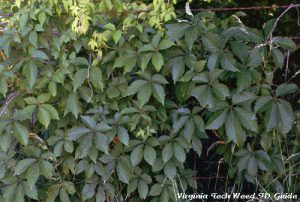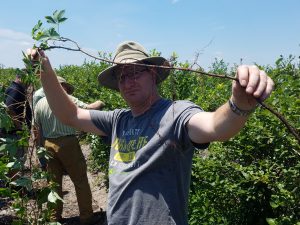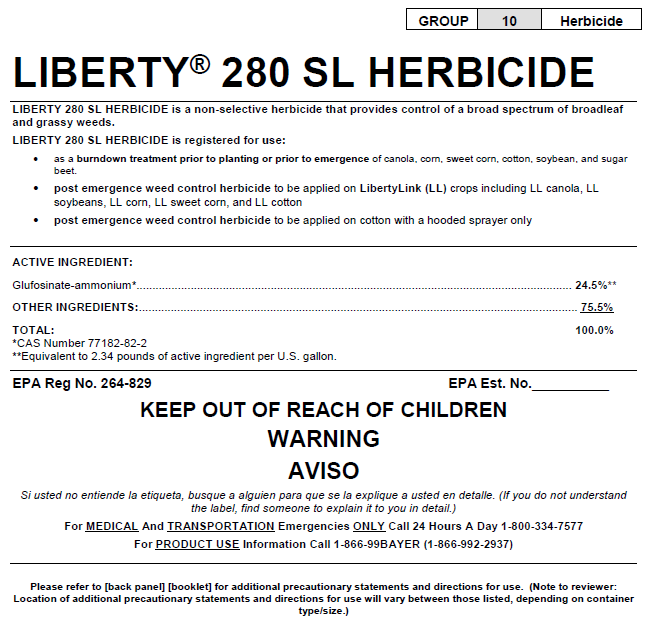Cucurbit downy mildew was confirmed on cucumber in northern New Jersey (Hunterdon County) today in the cucurbit downy mildew sentinel plot at the Snyder Research and Extension Farm in Pittstown. This is the fourth report of CDM on cucumber in New Jersey this growing season. No other cucurbit crops were affected. All cucumber growers in NJ are encouraged to add downy mildew specific fungicides to their weekly maintenance spray programs. All growers should scout cucumber plantings as well as all other cucurbit crops for symptoms. CDM has also been reported on cucumber in MD, DE, and PA. To track the progress of cucurbit downy mildew in the US through the CDMpipe website through NCSU please click here.
Vegetable Crops Edition
Seasonal updates and alerts on insects, diseases, and weeds impacting vegetable crops. New Jersey Commercial Vegetable Production Recommendations updates between annual publication issues are included.
Subscriptions are available via EMAIL and RSS.
Quick Links:
 NJ Commercial Vegetable Production Recommendations
NJ Commercial Vegetable Production Recommendations
 Rutgers Weather Forecasting - Meteorological Information important to commercial agriculture.
Rutgers Weather Forecasting - Meteorological Information important to commercial agriculture.
Veg IPM Update: Week Ending 7/12/17
Sweet Corn
European corn borer (ECB) catches remain very low, and no map will appear in this edition. Feeding in NJ sweet corn plantings is also low, with remaining larval infestations only on pre-tassel stage corn in the northern counties. Check 5 plants each in 10 random locations for a 50 plant sample. Look for “shot-hole” injury, and consider treating when the number of infested plants in a 50 plant sample exceeds 12%. As infested plants proceed to the pre-tassel stage, live larvae and damage may be found in the emerging tassels. Once plants hit full tassel, ECB larvae will move downward on the stalk and re-enter the plant near the area where ears are forming. This can result in direct injury to the ear. Growers should consider an insecticide application at the full tassel stage to target ECB larvae as they migrate downward. This application can eliminate larvae that have escaped any earlier insecticide applications. [Read more…]
Getting the Upper Hand on Virginia creeper

Picture 1 – Virginia creeper vine
Virginia creeper (Parthenocissus quinquefolia) is a perennial woody vine that climbs on other objects or trails along the ground. It is a common weed of orchards, vineyards and blueberry plantation. It is best identified by the typical palmate leaf with 5 leaflets that originate from the same point (picture 1). Virginia creeper will produce many tendrils with adhesive disks at their tips that will allow the vine to climb upward and to attach to any support. It can grow under a wide range of conditions including dry sandy or moist organic soils, sunny or shady sites, and is tolerant to high salinity. Plants will often establish through seeds dropped by birds who consumed the small blue berries in fall, but also by the spread of crawling stems that will produce new roots in contact with soil (picture 2). Virginia creeper is often confused with Poison-Ivy (Toxicodendron radicans). However, poison-ivy has 3 leaflets instead of 5 for Virginia creeper and lacks the tendrils and adhesive disks.
As a perennial weed, Virginia creeper will be tough to control as it can easily regrow after foliar injury from its extensive underground root system. When established, Virginia creeper will most often not be controlled with a single herbicide application, and multiple applications will be necessary to achieve acceptable control. Only nonselective postemergence herbicide (glyphosate) must be used to suppress or control this weed. In order to increase the efficiency of postemergence applications during the growing season, remove the vine from their support during winter pruning and lay it on the ground or plan a “cut stump” treatment during the growing season. Do NOT “prune out” the vine during the dormant season.

Picture 2 – Virginia creeper rooting stem
Spot treatment. Glyphosate may be applied in mid- to late summer after vine flowers in early July until the first signs of fall color appear in the foliage. Good growth and maximum leaf area is needed at the time of herbicide application during the summer. Wet a minimum of 50 percent of the weed foliage with a 1% glyphosate solution (1.25 oz of 4.5lb acid material per gallon of water) for effective control. For best control, don’t apply on stressed/wilted weeds.
Cut stump treatment. Best results are often obtained in late summer and early fall, but before fall color is observed in the foliage. Apply a 1% glyphosate solution to the cambial areas (inner bark area) of the stump of woody plants IMMEDIATELY after cutting. Cut and treat stumps only when the Virginia creeper is actively growing and not under stress.
WARNING. Injury due to root grafting may occur in adjacent plants. Do not treat cut stumps if there is a possibility of root grafting to desirable vegetation. Do NOT allow contact with green bark, trunk wounds, leaves, or root suckers of blueberry bushes.
The mention of trade names and rates is for educational purposes and does not imply endorsement by the author or the New Jersey Agricultural Experiment Station. Always defer to the product label for instructions on properly applying an herbicide.
Cucurbit Downy Mildew ALERT – 7/6/17
Cucurbit downy mildew was confirmed on cucumber in northern New Jersey (Warren County) today near Allamuchy. This is the third report of CDM on cucumber in New Jersey this growing season. All cucumber growers in NJ are encouraged to add downy mildew specific fungicides to their weekly maintenance spray programs. All growers should scout cucumber plantings as well as all other cucurbit crops for symptoms. CDM has also been reported on cucumber in MD, DE, and PA. To track the progress of cucurbit downy mildew in the US through the CDMpipe website through NCSU please click here.
Liberty 280 SL label for LibertyLink sweet corn

EPA has recently approved a new version of Liberty 280 SL label (see picture).
This new label includes increased LibertyLink (LL) corn rates, increased yearly maximum rates, and a sweet corn section for LL varieties.
Liberty 280 SL is a non-selective herbicide that provides control of a broad spectrum of broadleaf and grassy weed species. Liberty can be used as a burndown treatment prior to planting or prior to emergence of corn, sweet corn, or soybean, as a post-emergence herbicide to control emerged weeds in LL varieties of corn, sweet corn and soybean.
Liberty is a group 10 herbicide (glutamine synthetase inhibitor) that has contact activity and control emerged weeds at the time of application. Liberty provides good to excellent control of various annual grass species, including barnyardgrass, crabgrass, foxtail spp., and fall panicum. Excellent control (> 85%) of tough to control broadleaf weeds has also been notes for pigweed, cocklebur, jimsonweed, lambsquarters, marestail, common ragweed, and smartweed.
Applications of Liberty should be made between dawn and 2 hours before sunset to avoid the possibility of reduced weed control. As with all contact herbicides, uniform spray coverage is necessary to achieve consistent weed control (use at least 15 gal/A in normal situations, 20 gal/A if dense vegetation is present). For best results, apply when weeds are 2-4 inches tall. Apply ONLY over the top of LibertyLink corn, sweet corn, and soybean varieties.
The mention of trade names and rates is for educational purposes and does not imply endorsement by the author or the New Jersey Agricultural Experiment Station. Always defer to the product label for instructions on properly applying an herbicide.
Vegetable Disease Update – 7/6/17
- Cucurbit downy mildew has been confirmed on cucumber in 2 counties in southern New Jersey. All cucumber growers should consider adding downy mildew specific products to their regular maintenance programs.
- Basil downy mildew has been reported in central New Jersey.
- Late blight has been reported in areas outside the mid-Atlantic region this past week. There have been no new reports of Late blight on tomato or potato in our region in the past week.
- Dickeya dianthicola has been found in potato in Australia.
- Surveying for Dickeya dianthicola in potato fields and irrigation sources in NJ is currently on-going. If you suspect Dickeya, please contact your county agent. The best method for controlling Dickeya dianthicola in your operation is to adopt a zero-tolerance policy.
